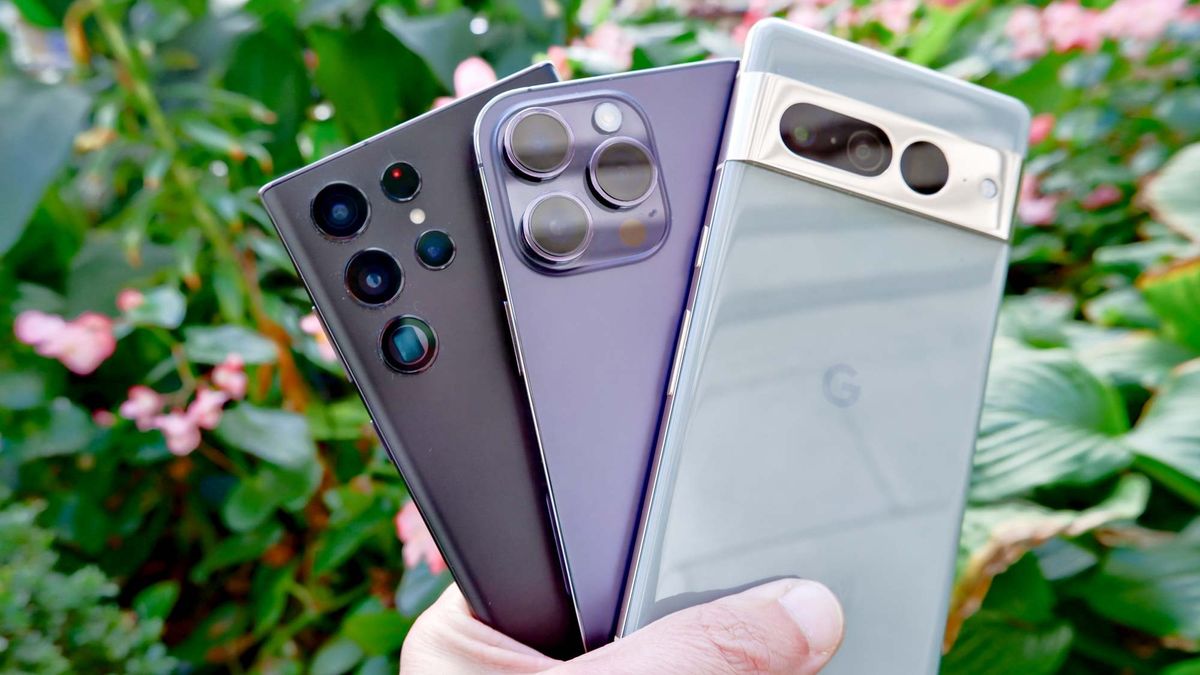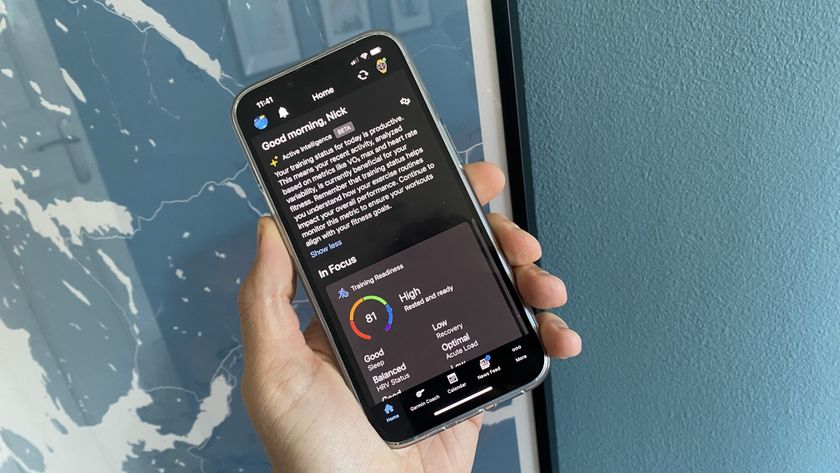The fastest phone of 2022: our test results are in
The top-performing phones of the year go head-to-head in a benchmark battle

Power isn't everything, but sometimes it's all you crave. And that's often the case with phones, where new devices frequently shout about how strong their silicon is in the hope of selling you a handset.
Whenever we review a smartphone at Tom's Guide, we put it through a diverse battery of tests, including several benchmarks testing the phone's CPU, GPU and other processing abilities. But in our reviews we normally only compare two or three phones together, based on what we think you, our readers, are likely to be considering buying. But as it's the end of the year, it's time for a free-for-all battle to see which phone is the most powerful of them all.
After searching through our database of test results, we looked at the top twenty performing phones of the year, and then narrowed down the list so only one phone with each type of chipset was left. Let us introduce you to those handsets now, before the great five-way face-off for the performance crown begins.
The most powerful phones of 2022
We have five phones on this list, each one representing the best scores for a specific type of chipset. Those five are the iPhone 14 Pro Max, iPhone 14, RedMagic 7S Pro, Xiaomi 12 Pro, and Google Pixel 7 Pro.
| Row 0 - Cell 0 | Chipset | RAM |
| iPhone 14 Pro Max | A16 Bionic | 6GB |
| iPhone 14 | A15 Bionic | 6GB |
| RedMagic 7S Pro | Snapdragon 8 Plus Gen 1 | 12GB, 18GB |
| Google Pixel 7 Pro | Tensor G2 | 12GB |
| Xiaomi 12 Pro | Snapdragon 8 Gen 1 | 8GB, 12GB |
The new iPhones probably need little introduction. But to explain why there are two of them on this list, we're using the Pro Max version to represent Apple's newest A16 Bionic chip and the standard iPhone 14 to represent the enhanced version of Apple's older A15 chip.
The Xiaomi 12 Pro contains a Snapdragon 8 Gen 1, the same processor found in phones from earlier this year like the Galaxy S22 and OnePlus 10 Pro, but as the highest-scoring, it gets to be the representative of these phones. The RedMagic 7S uses the updated edition of this Qualcomm silicon, the Snapdragon 8 Plus Gen 1, while the Pixel 7 Pro uses a custom Tensor G2 chip from parent company Google. This covers the vast majority of chips found in leading phones sold this year, and should therefore give us the most representative comparisons.
So with our contenders selected, it's time for three rounds of tests to see how these compare to each other. Pick your favorite and read on to see how they do.
Sign up to get the BEST of Tom's Guide direct to your inbox.
Get instant access to breaking news, the hottest reviews, great deals and helpful tips.
Geekbench 5 / Geekbench ML
The Geekbench 5 benchmark tests a phone's CPU, while the ML version sees how well its NPU can perform machine learning tasks. It's the most abstract of the tests here, but it allows for a comparison of overall computing power.
| Row 0 - Cell 0 | Single-core score | Multi-core score | TensorFlow Lite NPU score |
| iPhone 14 Pro Max | 1,882 | 5,333 | 3,165 |
| iPhone 14 | 1,727 | 4,553 | 2,777 |
| RedMagic 7S Pro | 1,331 | 4,230 | 2,232 |
| Google Pixel 7 Pro | 1,060 | 3,046 | 1,824 |
| Xiaomi 12 Pro | 1,249 | 3,783 | 1,763 |
The iPhones all do exceptionally well on all three of these tests, particularly for single-core results. Even the iPhone 14, which uses the older A15 chipset rather than the newer A16 chipset of the 14 Pro, still compares well on the single-core portion, although it falls behind on multi-core and NPU results.
The best Android phone on these tests were the RedMagic 7S Pro, showing that the best Qualcomm can provide for Android phones doesn't offer the all-emcompassing might of Apple's own silicon, even an older version of it. The Xiaomi 12 Pro comes in next, and is surprisingly far behind its Plus sibling. Finally, we have the Pixel. Google's upfront about the Tensor G2 being focused on machine learning rather than raw performance, but it's odd that the NPU score's still so low.
3DMark Wild Life Unlimited and Extreme Unlimited
These two GPU tests give the graphics abilities of these phones a thorough workout. Your GPU is essential for a great gaming experience, so being able to render detailed scenes and render them smoothly is the key to success in this test.
| Row 0 - Cell 0 | Wild Life Unlimited (FPS) | Wild Life Extreme Unlimited (FPS) |
| iPhone 14 Pro Max | 74 | 16.7 |
| iPhone 14 | 69 | 15.4 |
| RedMagic 7S Pro | 66 | 16.4 |
| Google Pixel 7 Pro | 40 | 10.8 |
| Xiaomi 12 Pro | 61 | 15.1 |
We can see our top two phones are again the iPhone 14 Pro Max and iPhone 14. Apple doesn't always make a huge thing out of its phones' gaming potential, but if you've checked our best gaming phones page any time recently, you'll see it's an iPhone at the top just because it has so much power.
Since the RedMagic 7S Pro is a gaming phone by design, it understandably does well, with results not that far behind the iPhone 14 Pro Max. Interestingly, the Plus vs. non Plus Snapdragon gap isn't that large this time, with the Xiaomi only a little behind the RedMagic. Likewise with the Pixel 7 Pro, which still sits at the bottom of the list, isn't losing out to its Android brethren by much.
Adobe Premiere Rush
A test of our own design, we time how long it takes a phone to transcode a 4K video clip into a 1080p one using Adobe Premiere Rush, with a color filter and fade-in transition added just for good measure. It requires a different set of processes for a phone to do this task compared to the others, so it's fun to see how different these results turn out.
| Row 0 - Cell 0 | Time to transcode (mins:secs) |
| iPhone 14 Pro Max | 0:30 |
| iPhone 14 | 0:28 |
| RedMagic 7S Pro | 0:46 |
| Google Pixel 7 Pro | 0:47 |
| Xiaomi 12 Pro | 0:48 |
That said, we didn't expect the iPhone 14 off all these to be the fastest phone overall. The iPhone 14 Pro Max's result is weirdly slow, seemingly spinning the wheels of its A16 chipset to lose out to both the regular iPhone 14 and even older models like the iPhone SE and iPhone 13 Pro Max. Apple needn't worry much though, as all the Android phones are a good 15 to 20 seconds slower. It goes to show how Apple does put in some work into making its phone practical for creative types who want to produce content without grabbing their camera or laptop.
Conclusion
Before trying to decide our winners and losers, first we have to thank Matthew and Madeline, who conduct the vast majority of smartphone tests for Tom's Guide (and our sister brands), and therefore made comparing these results possible!
As for the overall results, it's another year with a Pro iPhone at the top in the form of the iPhone 14 Pro Max. What's different this year though is that Apple snagged second place too with the iPhone 14, showing that its older chip can still take on Android rivals and win the majority of the time. Even if it still feels a bit stingy to deprive users of that phone of the newer silicon.
The Pixel 7 Pro and its Tensor G2 chipset is significantly less powerful. Maybe with the incoming Snapdragon 8 Gen 2, which we found considerably more potent when testing the reference design, will allow 2023 Android phones to make that gap even smaller.
However, power isn't everything. There's much more that makes a phone good, or well-suited to your needs, than its benchmark scores — one of the reasons why the Google Pixel 7 Pro is one of the best camera phones around. If you're curious about real-world testing and buying advice, check out the reviews for these phones, or our overall best phones guide.

Richard is based in London, covering news, reviews and how-tos for phones, tablets, gaming, and whatever else people need advice on. Following on from his MA in Magazine Journalism at the University of Sheffield, he's also written for WIRED U.K., The Register and Creative Bloq. When not at work, he's likely thinking about how to brew the perfect cup of specialty coffee.











